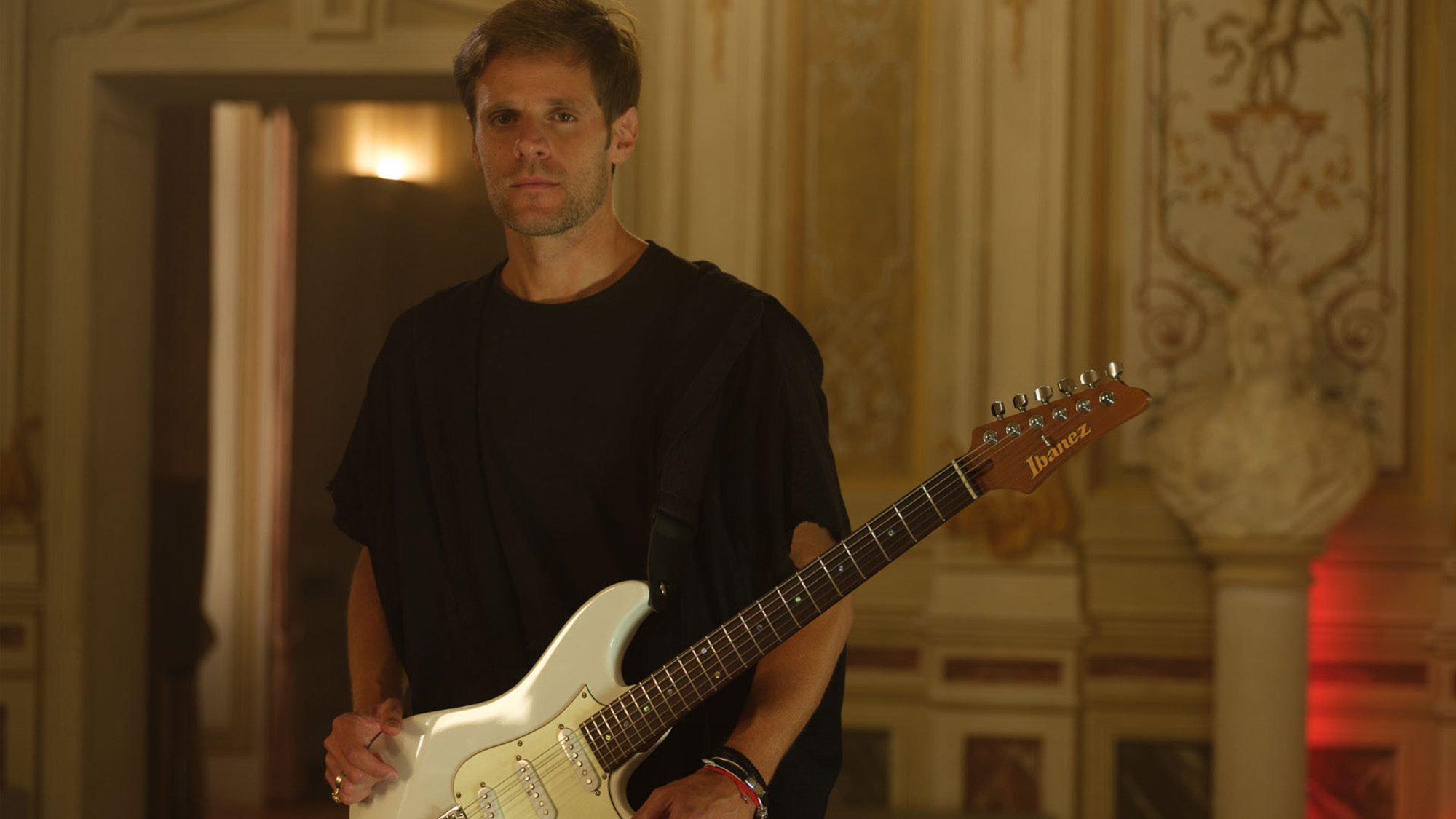Becoming a jazz-rock fusion player is a lifelong process, but these impressive licks from Ibanez maestro Luca Mantovanelli will get you started on your journey
Mantovanelli is one of fusion's most exciting players, and in this lesson from Jam Track Central he opens the door to a whole new world for the adventurous player to step on through

Let’s be honest, we’re not going to get you up and running as a jazz-rock fusion soloist in the space of month, never mind one short lesson. Not only is fusion notoriously difficult, with its blend of modern jazz complexity and rock bravado, but you’ll never get two people to agree on what it even is, exactly.
Fusion is a broad church, covering many, many musical strands from Miles Davis to Animals As Leaders, and despite its reputation for difficulty, most players can gain new ideas from it. As with any seemingly impossible musical obstacle, the trick is to take just one small element and find your own way in.
True to the nature of the genre, master improviser Luca Mantovanelli combines a wide range of rock, jazz and blues elements in his fusion solos. In the JTC Guitar package, 50 Days Of Fusion Licks, he gradually raises the level of difficulty through 10 weekly themes. Here we have three excerpts focusing on one of the essentials of fusion: the Dorian scale.
The Dorian scale or mode is one of the great building blocks of fusion. It’s a minor scale, but its characteristic sound comes from the mixture of minor 3rd and major 6th. In A Dorian, these notes are C and F#, and together they form the spicy tritone or ‘devil’s interval’. Enjoy these tasty licks!
Example 1
Here, we’re playing over the classic Im-IV7 change (Am7-D7), which instantly indicates A Dorian (A-B-C-D-E-F#-G). The scale’s F# note is particularly powerful over the D7 chord, where it functions as the major 3rd, so it’s a great note to end your I-IV phrases with.
The G# notes in bar 4 add some temporary tension, giving a tiny hint of A melodic minor (A-B-C-D-E-F#-G#) which adds extra spice to an already colourful lick.
Example 2
This time, we’ll start with Am7, but then suddenly take a classic fusion sideways jump to Cm7, using C Dorian (C-D-Eb-F-G-A-Bb).
All the latest guitar news, interviews, lessons, reviews, deals and more, direct to your inbox!
You can substitute minor pentatonic for Dorian since all its five notes are contained within the scale; check out Luca’s bluesy lick in bar 7 to hear it in action. And for that altered E7 at the end, Luca uses the very cool E Superlocrian scale (E-F-G-Ab-Bb-C-D), another classic jazz-fusion sound beloved of so many of its exponents.
Example 3
Let’s take things up another gear. This time, we have four minor 7 type chords, so four Dorian tonalities. We’ve already covered two of them, but we’re now adding G Dorian (G-A-Bb-C-D-E-F) and E Dorian (E-F#-G-A-B-C#-D).
Due to the reason mentioned above, the relevant minor pentatonics are also available in all cases. The final phrase is again a Superlocrian (or Altered scale) idea, but this time D Superlocrian (D-Eb-F-Gb-Ab-Bb-C), although you could continue with A Dorian here.
- 50 Days of Fusion Licks is available now via Jam Track Central.
Luca Mantovanelli’s well-received 2020 debut album Multiversum has been described as, “a wonderfully eclectic guitar driven ride exploring a universe of ideas. Full of memorable moments that jump from the chaotic to the controlled, this is an album that’s fun, furious and at times downright mad.” Luca also has two EPs available: 2023’s Shut The Funk Up, and Standards from 2024.
